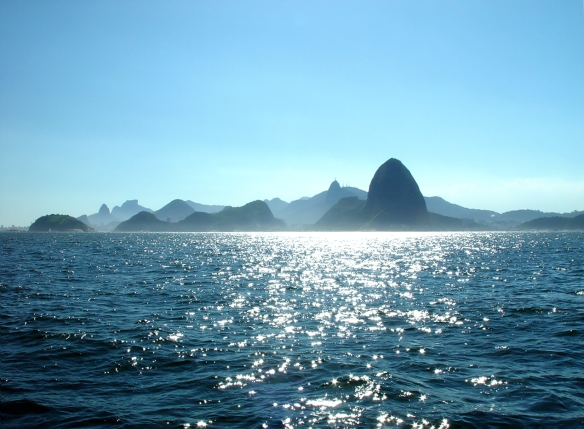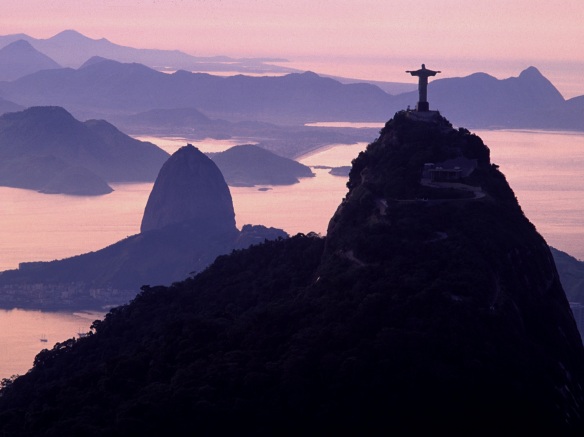 If people have only heard or only know of one city in Brazil or South America, it will be Rio de Janeiro. A city of unrivalled beauty and fun, once the country’s capital it is rapidly regaining its importance as a business centre thanks to being at the very heart of the Brazilian oil and gas industries. Hosting the 2016 Olympics and Paralympics, and the final of the 2014 FIFA World Cup has done no harm to the city either, nor was being elected by UNESCO as a World Heritage Site and as the first World Capital of Architecture. And nor will hosting the G20 in 2024, with the final meeting of world leaders taking place in Rio de Janeiro on 18 & 19 November.
If people have only heard or only know of one city in Brazil or South America, it will be Rio de Janeiro. A city of unrivalled beauty and fun, once the country’s capital it is rapidly regaining its importance as a business centre thanks to being at the very heart of the Brazilian oil and gas industries. Hosting the 2016 Olympics and Paralympics, and the final of the 2014 FIFA World Cup has done no harm to the city either, nor was being elected by UNESCO as a World Heritage Site and as the first World Capital of Architecture. And nor will hosting the G20 in 2024, with the final meeting of world leaders taking place in Rio de Janeiro on 18 & 19 November.
Rio has been a global icon ever since Fred Astaire and Ginger Rogers started “flying down to Rio” back in the 1920s. It is glamorous, sexy and fun. A major city, yet also a tropical beach resort.
Download a map of Rio de Janeiro
Rio de Janeiro is broken by the mountains in to two fairly distinctive zones, north and south. The north zone, zona norte, is where the bulk of Rio’s industrial activity and heavy industry is located, around which the main areas of poor and lower middle class housing are to be found.
The famous south zone, zona sul, on the other hand, houses the more expensive residential and cultural areas as well as all the major hotels. The buffer between north and south is the city centre, Centro, the commercial, banking and historic heart of Rio, that has an increasingly active cultural and entertainment scene, especially in Lapa and around the port. Most visitors only really need to be concerned with the zona sul and Centro, unless they have to visit a factory or office located up in the zona norte. The only other reasons to visit the north zone is to visit the international airport or to go to the Maracanã and Engenhão stadiums.
 It is the mountains and sea, and their juxtaposition, that have given the world’s largest tropical city its beauty, and it is these same topographical features that have dictated how Rio has grown and spread out along the coast and inland since being first visited or “discovered” by Europeans in the early 16th century.
It is the mountains and sea, and their juxtaposition, that have given the world’s largest tropical city its beauty, and it is these same topographical features that have dictated how Rio has grown and spread out along the coast and inland since being first visited or “discovered” by Europeans in the early 16th century.
Many of Rio’s attractions have links to the mountains and sea and are household names, and not just in Brazil. There is Corcovado Mountain and the Statue of Christ the Redeemer, considered one of the modern seven wonders of the world, from where visitors can look down on Sugar Loaf Mountain, another global landmark, and the bay of Rio, a bay so large that the first explorers assumed it was the mouth of a great river and called it River of January or Rio de Janeiro.
 From Copacabana to Ipanema, the beaches are equally well known, and in between the original suburbs whose names are now synonymous with the city’s football clubs, teams such as Flamengo and Botafogo. The big soccer games are still played at the Maracanã Stadium which when it opened for the 1950 World Cup could handle crowds in excess of 200,000. Nearly seventy years on the stadium is still one of the largest in the world, seating 76,000, and hosted the finals of the 2013 Confederation’s Cup, 2014 World Cup, and the opening and closing ceremonies of the 2016 Olympics, as well as the delayed final of South America’s Copa Libertadores in January 2021.
From Copacabana to Ipanema, the beaches are equally well known, and in between the original suburbs whose names are now synonymous with the city’s football clubs, teams such as Flamengo and Botafogo. The big soccer games are still played at the Maracanã Stadium which when it opened for the 1950 World Cup could handle crowds in excess of 200,000. Nearly seventy years on the stadium is still one of the largest in the world, seating 76,000, and hosted the finals of the 2013 Confederation’s Cup, 2014 World Cup, and the opening and closing ceremonies of the 2016 Olympics, as well as the delayed final of South America’s Copa Libertadores in January 2021.
 While sport has put Rio firmly in the global spotlight, it is also a cultural city. It is the birthplace of both bossa nova and samba, and its musicians remain at the forefront of Brazilian musical trends. The country’s main TV network, Globo, is based in Rio, as are much of the country’s film industry and South America’s main film festival, Festival do Rio. Rio’s film industry is behind such global successes as City of God, Central Station, Tropa de Elite, Bacurau and The Invisible Life . The city has also been the inspiration and backdrop to such recent international productions as 20th Century Fox’s animated hits, Rio and Rio 2; as well as Fast & Furious 5: Rio Heist, The Expendables, Blame It On Rio and Twliight: Breaking Dawn as well as James Bond’s Moonraker in 1979. Rio has also been used as the backdrop for many music videos and advertisements, and was seen by billions during the 2014 World Cup and 2016 Olympic and Paralympic games.
While sport has put Rio firmly in the global spotlight, it is also a cultural city. It is the birthplace of both bossa nova and samba, and its musicians remain at the forefront of Brazilian musical trends. The country’s main TV network, Globo, is based in Rio, as are much of the country’s film industry and South America’s main film festival, Festival do Rio. Rio’s film industry is behind such global successes as City of God, Central Station, Tropa de Elite, Bacurau and The Invisible Life . The city has also been the inspiration and backdrop to such recent international productions as 20th Century Fox’s animated hits, Rio and Rio 2; as well as Fast & Furious 5: Rio Heist, The Expendables, Blame It On Rio and Twliight: Breaking Dawn as well as James Bond’s Moonraker in 1979. Rio has also been used as the backdrop for many music videos and advertisements, and was seen by billions during the 2014 World Cup and 2016 Olympic and Paralympic games.
Rio is home to South America’s largest music festival, Rock in Rio (which next takes place from 24 September to 3 October 2021). The city’s carnival is, of course, the world’s biggest and most famous, and the celebrations to see in the New Year on Copacabana Beach are one of the most spectacular to take place anywhere on the planet.
On from the city of Rio to the state of Rio
Visitors who want to concentrate on Rio de Janeiro, and not take extra internal domestic flights, have plenty of options in close proximity to the city and in the state of Rio.
They range from Rio’s fashionable weekend playgrounds of Búzios and the Sun Coast, to the colonial masterpiece that is Paraty, and the lush verdant greenery and tropical islands of the Green Coast. Another option, and a fascinating day trip, is a drive of 40 miles (66km) into the mountains above Rio to visit the Imperial City of Petrópolis where the Summer Palace of the emperors and the Imperial Museum can be found amongst other attractions.
 _________________________________________________________________
_________________________________________________________________
Copyright © 1984-2024
Christopher Pickard – Rio the Guide – Critical Divide
All rights reserved – Todos os direitos reservados
criticaldivide.com – riotheguide.com


